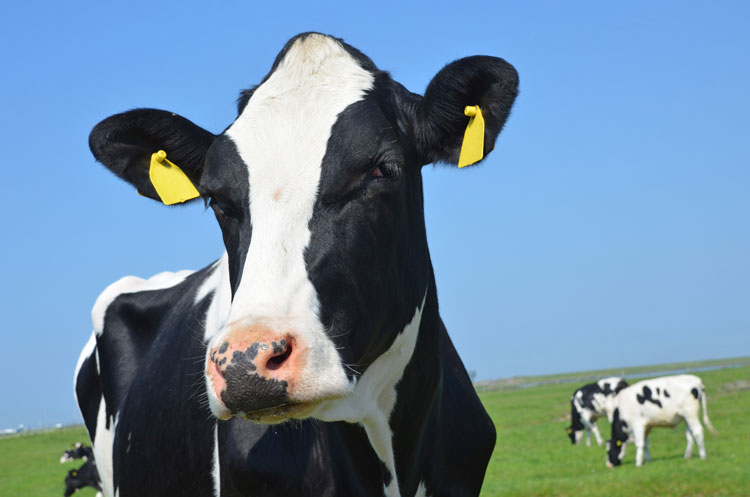
“We don’t want to drive people away from the breed because Holstein cows are too tall,” stated Paul Buhr to those attending the 132nd annual meeting of the Holstein Association USA. With that in mind, “we made a move to decouple stature from type composite indexes,” said the chair of the association’s Genetic Advancement Committee (GAC).
“GAC actions were aimed at improving our breeding tools: Udder Composite, Feet and Legs Composite, and our overall breeding objective TPI (Total Performance Index),” said Buhr. These actions will improve lifetime profitability and ‘lessen’ the correlated increase in stature.”
Correlation drops 35 to 50 percent
The correlation between Predicted Transmitting Ability (PTA) stature and the Feet and Leg Composite dropped from 0.46 to 0.23 with changes in the formula that are scheduled for this August’s genetic evaluations. That represented a 50 percent reduction. As for the Udder Composite, the correlation fell from 0.57 to 0.37 for a 35 percent reduction in stature’s correlation. The TPI formula’s correlation with stature also was diminished as udder composition is valued at 11 percent of the TPI formula and Feet and Legs is valued at 6 percent, noted Buhr who is a Wisconsin Holstein breeder.
“There are a number of reasons for adjusting the Udder Composite formula,” said Buhr as he pointed towards charts on projection screens. “These changes to Udder Composite improve the relationship with Productive Life, lifetime production of fat and protein pounds, continues to lower somatic cell score, all while lessening the relationship with stature,” explained Buhr.
“The changes to Feet and Leg Composite not only reduce stature’s impact, but also improve the relationship between productive life, feed efficiency, and lifetime profitability,” said Buhr to those attending the meeting in Bellevue, Wash.
Two changes for teats
In addition to addressing stature, more changes are in store for the Holstein Association’s Udder Composite this August. That will take place as both rear teat placement and teat length become intermediate traits and become part of the TPI formula.
What does that mean for dairy farmers and Holstein breeders?
“There will be a penalty for rear teats that are placed to close to one another,” said Buhr. “The same goes for teat length. Teats that are too short also are a negative.”
The new Udder Composite formula will be (previous weights are in parentheses):
- 0.23: Rear udder height (0.16)
- 0.20: Udder depth (0.35)
- 0.19: Rear udder width (0.12)
- 0.16: Fore udder attachment (0.16)
- 0.08: Udder cleft (0.09)
- 0.05: Rear teat placement (0.07)
- 0.05: Teat length 0.05 (none previously)
- 0.04: Front teat placement (0.05)
- -0.20: Adjustment for stature (none previously)
All these changes will go into the August 2017 Udder Composite and TPI formula.
Rear legs, side view diminished
In updating the Feet and Legs Composite, feet and legs score was given more weight while the trait rear legs side view will be removed entirely from the formula. By placing a greater weighting on final score, classifiers can better account for mobility in that composite.
The new Feet and Legs Composite formula will be (previous weights are in parentheses):
- 0.70: Feet and legs score (0.50)
- 0.21: Rear legs, rear view (0.37)
- 0:09: Foot angle: (.48)
- 0.00: Rear legs, side view (had been 0.15)
- -0.20: Adjustment for stature (none previously)
Adding livability
The GAC recommended adding Cow Livability to the TPI Formula. It will debut at 3 percent while Productive Life will fall from 7 to 4 percent.
“Productive Life measures the number of months a cow is in milk,” said Buhr. “Cow Livability measures a cow’s ability to stay alive while on the farm. About 20 percent of cows die instead of being sold for beef, with death losses averaging 7 percent a lactation,” the GAC Chair went on to explain.
The final change included raising the role feed efficiency plays in the TPI formula. To account for that added role, the following shifts were made (previous weights are in parentheses):
- 0.21: PTA protein (0.27)
- 0.17: PTA fat (0.16)
- 0.08: Feed efficiency (0.03).








